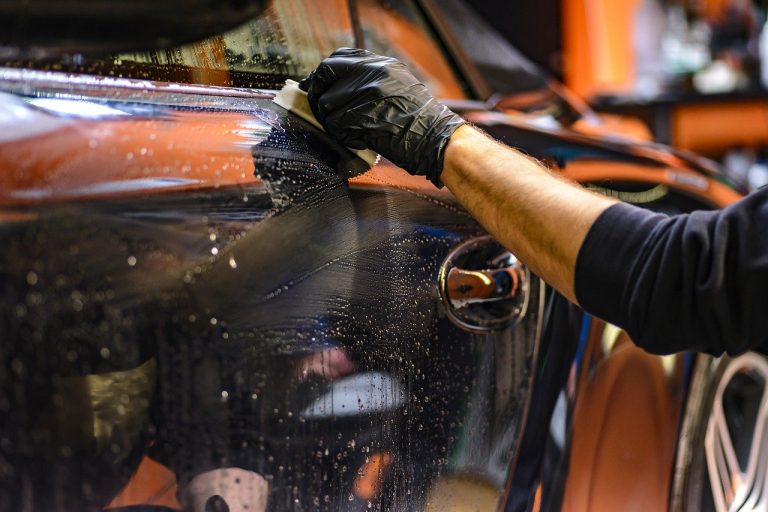Nothing quite like the experience of operating a vehicle that seems and is new. Whether you are passionate about cars or merely a person who wants to keep their vehicle in top condition, vehicle detailing is an important process that can significantly enhance your car's look and durability. In this guide, we will explore the technique of self auto detailing, enabling you to attain professional results within the comfort of your home.
Many people often think that consistent vehicle detailing is just a luxury reserved for those with deep pockets, but the reality is that it has a critical role in keeping your vehicle's worth and look. From protecting the paint to keeping the inside clean and healthy, the advantages of proper detailing greatly surpass the effort involved. Thus, what is the recommended frequency of auto detailing for your vehicle? How do interior and exterior detailing differ? In the following sections, we will tackle these queries and more, helping you transform your car care routine into an enjoyable and beneficial practice. Whether you are getting rid of tough stains or deciding on ceramic coating and wax, we’ve got you covered expert tips and insights.
Comprehending Vehicle Detailing
Vehicle detailing is a detailed cleaning, restoration, and finishing of a vehicle, which includes both the interior and outside. While a regular car wash may handle superficial dirt, detailing dives much deeper into preserving the car's condition. It entails multiple cleaning processes, unique products, and usually, professional-grade equipment to obtain that spotless finish. This process can revive a vehicle's original beauty, causing it look and seem as good as new.
Consistent auto detailing is vital not just for visual appeal but also for upholding the resale value and longevity of a car. It includes various tasks such as washing, applying wax, buffing, and cleaning various interior surfaces. paint protection films perform services like paint correction and maintenance of upholstery materials to guarantee every inch of the vehicle is attended to. This not only improves looks but also protects against conditions that can lead to deterioration over time.
Knowing the distinctions between inside and outside detailing is crucial for car drivers. Interior detailing focuses on cleaning and sanitizing surfaces like seats, floor mats, control panels, and other compartments, while outside detailing highlights washing, buffing, and sealing the vehicle's exterior. Both are important for thorough care, and with the proper knowledge and equipment, individuals can attain a professional-grade result at home.
Essential Methods for a Superior Finish
Securing a superior finish in automobile detailing requires the correct methods and attention to finishing touches. Commence with a thoroughly washing procedure to clear dirt and grime from the outside. Employ two separate buckets—one for lathered water and another for rinsing your mitt. Be sure to rinse the mitt before adding it back into the soapy water to eliminate introducing contaminants onto the paint. This approach minimizes the chance of scratches and swirl marks, providing a flawless surface suitable for more detailed work.
After your car is washed, concentrate on correction and protection. For paint correction, utilize a dual-action polisher with the suitable pads and compounds to remove imperfections. Work in limited sections and maintain even pressure for uniform results. After reaching the desired level of shine, it’s time to put on a protective layer, selecting between wax or ceramic coating based on your auto's needs. Wax provides a soft glow and is more convenient to apply, while ceramic coating provides longer-lasting protection against outside factors.
At last, pay attention to the interior to achieve a complete finish. Utilize a vacuum with suitable attachments to access under seats and in crevices. Follow up, use suitable cleaners for multiple surfaces, such as leather, vinyl, and cloth. Pay extra attention to the dashboard and console, as these areas can gather dust quickly. A finishing touch with an interior protectant can create shine and help maintain your vehicle’s interior for a healthier ride. By mastering these techniques, you can raise your DIY detailing efforts to a high-quality level.
Maintaining The Vehicle Between Detailing Sessions
To keep your vehicle seeming great between expert details, regular maintenance is crucial. Commence by cleaning a car bi-weekly to clear away dirt, grime, and contaminants that can damage the paint. Use a soft car wash soap and a microfiber wash mitt to avoid scratches. It is also essential to rinse thoroughly to ensure no soap residue remains, which can weaken the finish. Steer clear of washing your car in direct sunlight, as this can lead to water spots.
Additionally, shielding a vehicle's surfaces should be a main focus. Using a coat of wax every three months can provide a barrier against the elements and enhance shine. If you prefer a longer-lasting solution, consider a ceramic coating that offers superior protection against UV rays, dirt, and water stains. During the maintenance routine, check and maintain the tires and windows as well. Clean the glass with a specific cleaner to ensure clarity and maintain tire pressure periodically to encourage even wear and extend tread life.
Lastly, don't overlook a car's interior. Frequently vacuuming and wiping down surfaces will help reduce dirt buildup and sustain a fresh environment. Use suitable cleaners for different materials, like leather or fabric, to keep they remain in good condition. Odors can be handled by using air fresheners or odor absorbers, keeping the car smells pleasant. By applying these simple maintenance tips, you can ensure your car remains in top shape and seems great in between detailing sessions.

